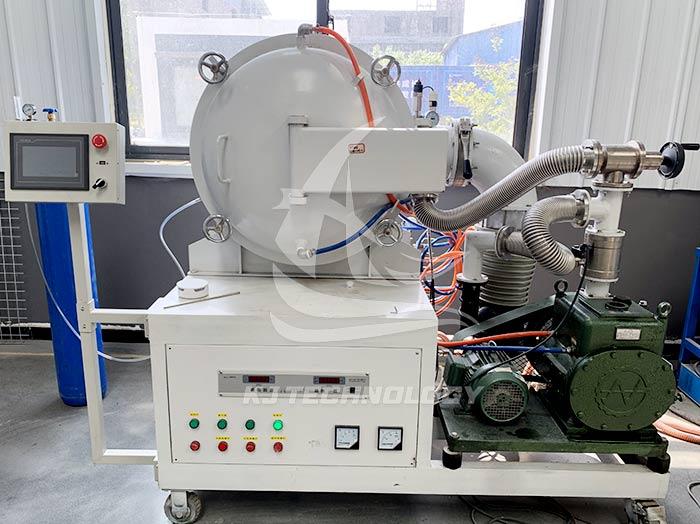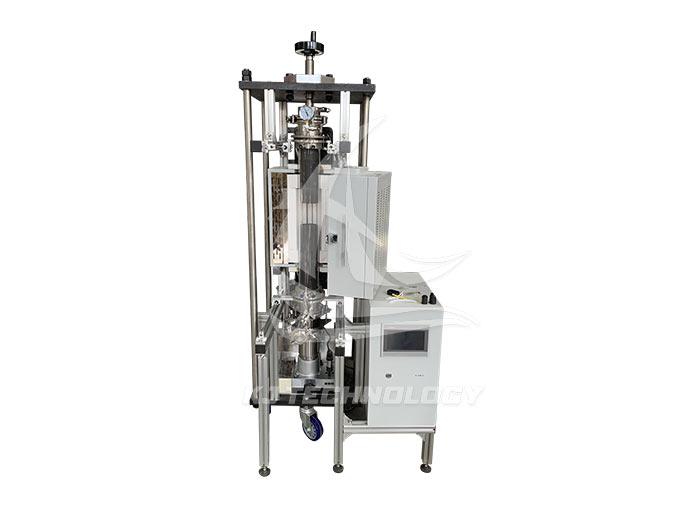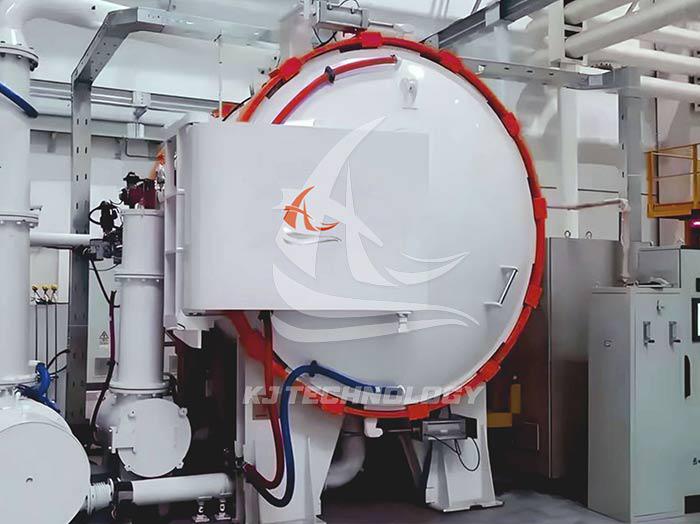Common faults of experimental vacuum hot pressing furnace
 09-22-2025 Author: KJ technology
09-22-2025 Author: KJ technology
The common faults of experimental vacuum hot pressing furnaces can be divided into four categories: temperature abnormalities, vacuum system faults, mechanical structure faults, and electrical component faults. The specific fault phenomena and solutions are as follows:
1. Abnormal temperature
High temperature alarm
Possible reasons: incorrect temperature controller parameter settings, solid-state relay breakdown, poor contact of thermocouple probe.
resolvent:
Check the parameters of the thermostat and refer to other normally used thermostats to calibrate all parameters.
After a power outage, use a multimeter to measure the resistance between the two output points of the solid-state relay. Normally, the resistance should be several megohms or more. If it is broken down, there will be almost no resistance, and a new one of the same model should be used.
When powered on, gently shake the thermocouple probe in the corresponding working area by hand and observe whether the temperature controller displays a large jumping amplitude. If so, it indicates poor contact of the thermocouple probe and needs to be replaced with a new one.
The displayed temperature is too low to reach the set value
Possible reasons: incorrect temperature controller parameters, damaged thermocouple, heating tube not powered on properly, increased resistance value of heater.
resolvent:
Check if the temperature controller parameters are normal and if there is an output signal.
Check if the thermocouples are damaged by swapping them with thermocouples on a normal thermostat and observing the temperature display. If the thermocouples are indeed damaged, they must be replaced.
After powering on, start heating and use a test pen to test the wires connected to the heating tube according to the circuit diagram to see if there is electricity. If there is electricity, use a clamp meter to measure whether the current is not significantly different from other working areas. If there is no electricity, check the circuit one by one according to the circuit diagram.
According to the instrument manual, increase the output power of the instrument and replace the heater with a new one when it is severely aged.
2. Vacuum system malfunction
Vacuum cannot be drawn up or is too low
Possible reasons: insufficient gas source pressure, vacuum gauge malfunction, poor sealing of furnace door, leakage of pipes or valves, aging of vacuum pump oil, aging of high vacuum gauge.
resolvent:
Confirm whether the vacuum gas source is normal (usually requiring -95KPa or above) and whether the compressed air pressure is normal.
Check if the vacuum gauge is in good condition and compare it with a vacuum gauge in normal use to see if the parameters are normal.
Check if the door is tightly closed, if the sealing film at the entrance is damaged or deformed, and if there are any foreign objects on the door panel.
Check if there is any air leakage in the pipelines, pneumatic valves, thermocouple inlets, and other locations in the corresponding work area. Usually, this occurs more frequently at the thermocouple inlet, as replacing the thermocouple often damages the vacuum sealing performance and requires re sealing with AB glue.
Replace the vacuum pump oil or high vacuum gauge.
vacuum loss
Possible reasons: poor sealing of the furnace body, abnormal operation of the vacuum pump, and blockage of the vacuum system pipeline.
resolvent:
Carefully inspect the sealing rings at the furnace door, observation window, and pipeline connections for aging, damage, or improper installation. If any of the above situations occur, replace the sealing rings in a timely manner and reinstall them.
Check if the oil level of the vacuum pump is normal and if the oil quality is clean. If there are any problems, add or replace the vacuum pump oil; Check if the valve of the vacuum pump is tightly closed and if there is any air leakage. If there is any air leakage, repair or replace the valve.
Check whether there are impurities or foreign objects blocking the pipeline, and clean the blockage.
3. Mechanical structural failure
The door doesn't close tightly
Possible reasons: Loose hinges, deformed buckles, damaged sealing strips at the door entrance, and deformed door panels.
Solution: Tighten the hinge, replace the buckle or sealing strip, and calibrate the door panel.
The fan has abnormal noise
Possible cause: Foreign objects entering the fan impeller and loosening of screws fixing the motor.
Solution: Clean the foreign objects inside the fan wheel and tighten the screws of the motor.
Pneumatic valve cannot operate
Possible reasons: malfunction of solenoid valve, insufficient compressed air pressure, and damage to the pneumatic valve itself.
resolvent:
Check if the solenoid valve is working properly.
Confirm whether the compressed air pressure meets the working requirements.
If the air pressure is normal and the solenoid valve is also in good condition, a new pneumatic valve needs to be replaced.
4. Electrical component malfunction
Solid state relay breakdown
Phenomenon: The heating element is continuously powered on, and the temperature rises uncontrollably or cannot be turned off.
Solution: After power failure, measure the output resistance of the solid-state relay with a multimeter. If the resistance is close to 0 Ω, it indicates that the relay has been broken down and needs to be replaced with a relay of the same model.
Thermocouple damaged
Phenomenon: The temperature displayed by the temperature controller does not match the actual furnace temperature.
Solution: Compare and calibrate the temperature sensor with a standard thermometer. If the error exceeds ± 1 ℃, replace the sensor and check if the sensor installation position is correct.








